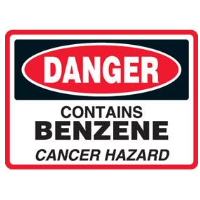Extreme Levels of Cancer-Causing Chemicals Found in State’s Fracking Wastewater

On the heels of reports quantifying for the first time how often California oil drillers use fracking and injection wells to blast into the Earth and deposit accompanying wastewater back into the ground, new analyses of data are finding dangerous levels of cancer-causing chemicals.
The Center for Biological Diversity said its analysis found benzene levels at more than 1,500 times the federal limits for drinking water in tests dating back to last April. Chromium-6 was found at levels 2,700 times that recommended by the state Office of Environmental Health Hazard Assessment (OEHHA).
A year after California passed Senate Bill 4, regulating oil and gas well-stimulation techniques like hydraulic fracturing for the first time, the state is slowly developing a picture of the fracking landscape. A report (pdf) commissioned by the 2013 law found that around half of new wells drilled in the last decade were fracked.
The state is trying to get a handle on the decades-old drilling techniques, which have been updated in the 21st century to include toxic chemicals, high volumes of pressurized water, sand and hydrochloric or hydrofluoric acid. Fracking flowback is the stuff that bubbles up to the surface during drilling and is either injected back into the ground or dumped in a pit. Drillers are reanimating old, abandoned wells and tapping sites once thought inaccessible.
The center said its analysis is incomplete for various reasons, including the absence of at least 100 fracking flowback tests “from the reporting website managed by California’s Division of Oil, Gas and Geothermal Resources (DOGGR), in violation of state law.” One hundred and fifty of the state’s 479 fracking fluid chemical tests are missing benzene data. All but six of the 329 chemical tests that were conducted for benzene showed the chemical’s presence.
“Toluene, a toxin that can affect the central nervous system and harm developing fetuses, was found to exceed federal-mandated limits for drinking water 118 times,” the report said.
Timothy Krantz, a professor of environmental studies at the University of Redlands, told the Los Angeles Times that he thought the benzene numbers were a reporting error when he saw them. “They are just phenomenal numbers,” he said. The Times conducted its own analysis of the state’s numbers and reached conclusions similar to the center’s, although with a slightly lighter spin.
The newspaper said it found the benzene levels were just 700 times the federal standard and noted that benzene appears naturally in some areas. The state is only now coming to terms with its lack of oversight of the oil industry, which the Times described as “inadvertent.” (“Inadvertent: not resulting from or achieved through deliberate planning.”)
Critics would tend to disagree with that characterization of DOGGR, which has been under fire by environmentalists for years over the perception that the agency bends over backwards to accommodate the industry.
The U.S. Environmental Protection Agency (EPA) has butted heads with the state for years over whether fracking and injection wells are dumping dangerous chemicals into aquifers that are critical sources of drinking water in the parched state. The EPA has relied on DOGGR since an agreement in 1983 to enforce federal safe water standards. The feds provided a list of aquifers in the state that were exempt from federal law and could be used for injection, but apparently the state’s copy of the agreement lists 11 more exempt aquifers than the fed version.
Back in October, the center calculated, using state documents, that 3 billion gallons of oil industry wastewater had been injected into aquifers via at least nine wells.
Center attorney Hollin Kretzmann told the Times the situation is “a disaster. The aquifer information is a complete mess. They are trying to piece it all together—in some cases decades after these injections started.”
–Ken Broder
To Learn More:
Cancer-Causing Chemicals Found in Fracking Flowback from California Oil Wells (Center for Biological Diversity)
High Levels of Benzene Found in Fracking Waste Water (by Julie Cart, Los Angeles Times)
California Oil Regulator Cites “Serious Concerns” on Data Collection (by Jeremy B. White, Sacramento Bee)
California Finally Counts Them and Finds Half of New Oil Wells Are Fracked (by Ken Broder, AllGov California)
- Top Stories
- Controversies
- Where is the Money Going?
- California and the Nation
- Appointments and Resignations
- Unusual News
- Latest News
- California Forbids U.S. Immigration Agents from Pretending to be Police
- California Lawmakers Urged to Strip “Self-Dealing” Tax Board of Its Duties
- Big Oil’s Grip on California
- Santa Cruz Police See Homeland Security Betrayal in Use of Gang Roundup as Cover for Immigration Raid
- Oil Companies Face Deadline to Stop Polluting California Groundwater





